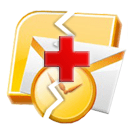Outlook Attachment Extractor
- Dec 06, 2023
- Email Migration
Attachments in Outlook emails are commonly used for sharing files and documents, playing a crucial role in collaboration with clients, partners, and colleagues. These attachments often contain crucial information essential for understanding the content of the respective email. The process of extracting attachments from PST and OST files is important for various reasons including data backup, archiving, and providing easy access to files.
PstScan Pro
12-in-1 command line converter tool: scan, convert emails, extract attachments, and data import/export to and from .pst, .ost, .msg, .eml and .mbox files.
Read More →Bulk Attachment Extraction
Extracting attachments from Outlook data files involves using PstScan Pro for the extraction process. This command line tool helps to filter and search the emails and extract attachments from each email by ensuring that all attachments are downloaded to your computer.
cd C:\Program Files (x86)\PSTWalker Software\PstScanPro
pstscanpro extract -f c:\users\*.pst -p "**/{SUBJECT}/" --mkdir --srcfoldersThe example above extracts all attachments from all .pst files located in the c:\users folder. Note the optional use of the ** placeholder for the --mkdir and --srcfolders parameters and the '{SUBJECT}' Export Macros for the destination path.
Save All Emails and Extract Attachments
This example saves all items from C:\test.pst to EML files using a sequential naming convention (1.eml, 2.eml, 3.eml, etc.). From each saved .eml file, all attachments are extracted and placed into a folder with a leading period before the filename (.1.eml, .2.eml, .3.eml, etc.).
cd C:\Program Files (x86)\PSTWalker Software\PstScanPro
pstscanpro export eml -f c:\test.pst -p "export" --mkdir --srcfolders --name sequential --cmd "extract -f ""{FILE}"" -p "".{FILENAME}/"" "
Note the use of the --cmd parameter with nested parameters for the extract command. Also, please observe the use of the ending '/' after the starting period in '.{FILENAME}/' to parse the path as a directory name rather than an extension.
Save All Emails and Extract Office Documents Attachments
In this example, all items from C:\test.pst are saved to EML files, and only .pdf and .xls (.xlsx) attachments are extracted. Note that the extension filter uses a start-from match rather than an exact match.
cd C:\Program Files (x86)\PSTWalker Software\PstScanPro
pstscanpro export eml -f c:\test.pst -p "export" --mkdir --srcfolders --name sequential --cmd "extract -f ""{FILE}"" -p "".{FILENAME}/"" -e "".pdf"" "".xls"" "
It's important to be aware that the export and extraction processes may require additional time and resources because the software converts items and attached emails to the .eml format before parsing the .eml file to extract attachments.
If you wish to export only office documents or the original attached emails without conversion, using the '{THIS}' macro instead of '{FILE}' will result in approximately 1.5x faster processing:
cd C:\Program Files (x86)\PSTWalker Software\PstScanPro
pstscanpro export eml -f c:\test.pst -p "export" --mkdir --srcfolders --name sequential --cmd "extract -f ""{THIS}"" -p "".{FILENAME}/"" -e "".pdf"" "".xls"" "
Conclusion
In conclusion, the integration of export macros and the application of search queries with specific criteria, including the use of search keywords and boolean search operators, significantly enhance the efficiency of the extraction process. This advanced functionality empowers users to selectively extract only the relevant items, streamlining the workflow and saving valuable time and effort in managing email data.
See Also
Boolean Search Syntax
This guide explains boolean search operators, functions and wildcards (AND, OR, NOT, ALL, ATLEASTONE, NEITHER, NOTALL, ?, *)
Understanding Export Macros: How to Use Them Effectively
Macros are special sequences of characters that the program automatically replaces with specific values under certain circumstances. They can be utilized in command line parameters and UI forms for exporting emails or extracting attachments.
